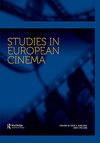Europe’s irresolvable messiness
IF 0.2
0 FILM, RADIO, TELEVISION
引用次数: 0
Abstract
In a recent discussion with students about what European cinema might look like, it was striking how the descriptions that emerged seemed to focus principally on what French cinema was perceived to be, which was then transposed onto cinema production across the continent as a whole. When pressed to provide examples of films to help flesh out the debate, a core of students offered up a selection of greats from the French New Wave. Les Quatre Cents Coups/The Four Hundred Blows (Truffaut, 1959) and A Bout de Souffle/ Breathless (Godard, 1960) were uppermost in their thinking, therefore, which no doubt bespeaks the way film studies has tended to fall back on a certain canon, which in turn has been cemented by curricula over many years. Matthieu Kassovitz’s La Haine/Hate (1995) also made an appearance, not unexpectedly either in view of its apparent ubiquity on A-level syllabi, but it was the mention of Portrait de la jeune fille en feu/Portrait of a Lady on Fire (Sciamma, 2019) that was the most pleasing and encouraging. As a recent film, its high profile and appeal to, and influence on, a contemporary student audience is very gratifying. Indeed, it has already cropped up regularly in a number of student presentations since its release. Nevertheless, these are still all French films. Where are the Rossellini, Bergman, Tarkovsky or Fassbinder films? What about Haneke, Almodóvar, Hogg or Akin? Why are they seemingly so overlooked? Why is it that French cinema seems to remain synonymous with European film as a whole for so many? These are the questions that linger. When pressed a little more about other European films they might be familiar with, it was telling that a number of films available on Netflix were cited by the same group of students. El hoyo/The Platform (Gaztelu-Urrutia, 2019), for example, was cited and sparked an interesting conversation about Spanish horror films of recent times, many of which students began to remember and list with no little enthusiasm. Most strikingly of all, Edward Berger’s Im Westen nichts Neues/All Quiet on the Western Front (2022), the first German-language adaptation of Erich Maria Remarque’s powerful anti-war novel, was also mentioned, unsurprisingly perhaps in view of the recent publicity surrounding its significant BAFTA awards and Oscar nominations. However, because these were seen specifically as genre films the students seemed to ascribe them to popular cinema more generally, as opposed to European cinema per se. Maybe their distribution on Netflix rather than to a more typical art cinema setting contributed to that perception, their accessibility also perhaps removing something of that arty mystique the students appeared to associate with European films such as those produced by the auteurs of the French New Wave. There is no doubt that that label – auteur – continues to colour the perception of what constitutes European cinema more than anything else, and that is perhaps the fault of film courses everywhere. It might simply have something to do with the way Netflix often defaults to dubbed versions of films, potentially seducing audiences into believing that the STUDIES IN EUROPEAN CINEMA 2023, VOL. 20, NO. 1, 1–3 https://doi.org/10.1080/17411548.2023.2181568欧洲无法解决的混乱
在最近与学生们讨论欧洲电影可能是什么样子时,令人惊讶的是,出现的描述似乎主要集中在法国电影的形象上,然后将其转化为整个欧洲大陆的电影制作。当被要求提供电影的例子来帮助充实这场辩论时,一名核心学生提供了法国新浪潮中的一些伟大人物。因此,《四分硬币政变》/《四百次打击》(Truffaut,1959年)和《Souffle Bout de Souffle》/《Breathless》(Godard,1960年)是他们最关心的问题,这无疑表明电影研究倾向于依赖某一经典,而这一经典又被多年来的课程所巩固。马蒂厄·卡索维茨(Matthieu Kassovitz)的《海恩/仇恨》(La Haine/Hate,1995)也出现了,这也并不意外,因为它在A级教学大纲中明显无处不在,但最令人高兴和鼓舞的是《着火女士的肖像》(Portrait de La jeune fille en feu/Portrait of A Lady on Fire,Sciamma,2019)。作为最近的一部电影,它的高调和号召力,以及对当代学生观众的影响,是非常令人欣慰的。事实上,自发布以来,它已经定期出现在许多学生的演讲中。尽管如此,这些仍然都是法国电影。罗塞里尼、伯格曼、塔可夫斯基或法斯宾德的电影在哪里?哈内克、阿尔莫多瓦、霍格或阿金呢?为什么它们看起来如此被忽视?为什么对这么多人来说,法国电影似乎仍然是欧洲电影的代名词?这些都是挥之不去的问题。当被问及他们可能熟悉的其他欧洲电影时,这说明同一组学生引用了Netflix上的一些电影。例如,El hoyo/The Platform(Gaztelu Urrutia,2019)被引用,并引发了一场关于近期西班牙恐怖电影的有趣对话,其中许多学生开始以不小的热情回忆和列举。最引人注目的是,爱德华·伯杰(Edward Berger)的《Im Westen nichts Neues/all Quiet on the Western Front》(2022)也被提及,这是根据埃里希·玛丽亚·雷马克(Erich Maria Remarque)强有力的反战小说改编的第一部德语作品,这或许并不奇怪,因为最近围绕其重要的英国电影和电视艺术学院奖和奥斯卡提名的宣传。然而,由于这些电影被专门视为类型电影,学生们似乎更普遍地将其归因于流行电影,而不是欧洲电影本身。也许它们在Netflix上的发行,而不是更典型的艺术电影环境,促成了这种看法,它们的可访问性或许也消除了学生们似乎与欧洲电影(如法国新浪潮导演制作的电影)联系在一起的艺术神秘感。毫无疑问,这个标签——导演——继续给欧洲电影的构成带来色彩,这可能是世界各地电影课程的错。这可能只是与Netflix经常默认配音版本的电影有关,这可能会诱使观众相信《2023年欧洲电影研究》,第20卷,第1期,第1-3页https://doi.org/10.1080/17411548.2023.2181568
本文章由计算机程序翻译,如有差异,请以英文原文为准。
求助全文
约1分钟内获得全文
求助全文

 求助内容:
求助内容: 应助结果提醒方式:
应助结果提醒方式:


